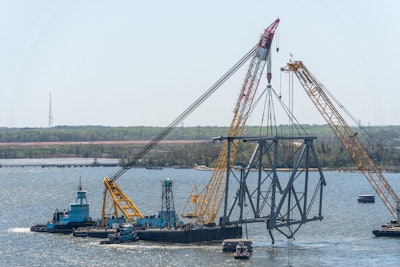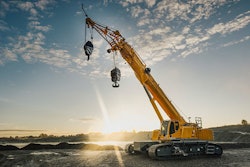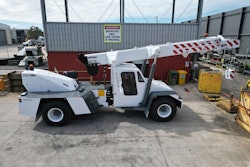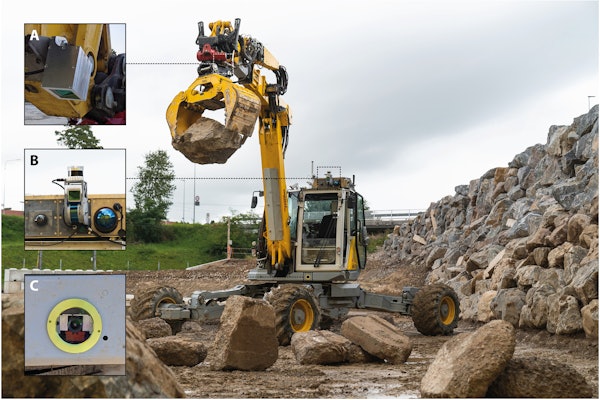
The largest floating crane on the Eastern Seaboard has begun removing debris from the wreckage of the collapsed I-695/Francis Scott Key Bridge over the Baltimore Port channel.
The Chesapeake 1000 crane, nicknamed Chessy, can been seen in the video at the end of this story hauling off large debris from the collapsed bridge.
The crane, which has a lifting capacity of 1,000 tons, was contracted out by the Naval Sea Systems Command for the task of removing debris after the cargo ship Dali struck a pillar of the bridge March 26 causing its decks to collapse into the Patapsco River.
Donjon Marine Co. of New Jersey owns and operates the crane, which has a boom that extends 230 feet 9 inches and has an additional 25-plus-foot-long jib boom.
Chessy is joined by several other cranes working to remove the wreckage to fully reopen the Port of Baltimore to ship traffic. They include 400-, 200- and 150-ton cranes.
Alternative smaller channels have been opened, with full reopening scheduled for the end of May.
The Chesapeake 1000 has steel deckhouses fitted on deck with the forward house containing hoist machinery and equipment and the midship house containing the generator room, office and galley, according to Donjon Marine.
It was completed in 1972 to secretly build a specially designed ship large enough to remove a sunken Soviet submarine the CIA had discovered in 1968 in the Pacific Ocean. Howard Hughes was announced as the owner of the ship, called the Hughes Glomar Explorer, to disguise its true purpose.
The crane later went into civilian service under the name the Sun 800, according to the Sun Ship Historical Society. At the time, its capacity was 800 tons and was owned by Sun Shipbuilding and Dry Dock Company based in Chester, Pennsylvania, and often used for repairing and building ships. Its biggest lift was in 1978 when it placed the 788-ton draw span for the Benjamin Harrison Bridge in Hopewell, Virginia, according to the historical society.
It was later renamed the Penn 800 after it was transferred to Penn Ship. It was damaged in a storm off the East Coast. During repairs, its capacity was boosted to 1,000 tons, and it became the Penn 1000, the society says. It was transferred to Donjon Marine in 1998 and renamed the Chesapeake 1000.
For more details on the cleanup operation for the Baltimore bridge collapse, click here.













